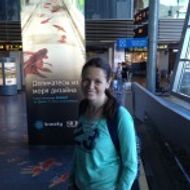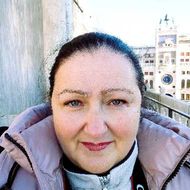- A
- A
- A
- АБB
- АБB
- АБB
- А
- А
- А
- А
- А
- Национальный исследовательский университет «Высшая школа экономики»
- Факультет математики
- Мероприятия
- Доклад Франческо Сала (Университет Токио)
-
Факультет
-
Образование
- Образование
- Бакалаврские программы
- Магистерские программы
- Аспирантура
- Программа Math in Moscow
- Программы для учителей и школьников
- Майнор «Математические структуры»
- Календарь школ
-
Подразделения
- Базовые кафедры
-
Научные подразделения
-
- Международная лаборатория теории представлений и математической физики ВШЭ
- Международная лаборатория кластерной геометрии
- Лаборатория алгебраической геометрии и ее приложений
- Международная лаборатория зеркальной симметрии и автоморфных форм
- Научно-учебная лаборатория сложных сетей, гиперграфов и их приложений
- Лаборатория математического образования
-
-
In Memoriam
- Мы помним
-
Виртуальная доска объявлений
Адрес: 119048, Москва,
ул. Усачёва, 6
тел. (495) 916-89-05
тел. (495) 772-95-90 *12725
E-mail: math@hse.ru
Учебный офис:
mathstudyoffice@hse.ru
тел. (495) 624-26-16
тел. (495) 772-95-90 *12713
Telegram каналы:
Канал Студсовета Матфака - @mathhse_council
Канал Деканата - @mathhse_news
Канал Учебного офиса ФМ - @mathhse_study
Канал Матфак внеучебка - @mathhse
ДПО факультета математики:
dpo-math@hse.ru
Проект «Математическая вертикаль»:
math.vertical@hse.ru
ЛМШ факультета математики - Летняя школа для школьников:
math.vertical.school@hse.ru
Редакторы сайта факультета:

Доклад Франческо Сала (Университет Токио)
Kac's polynomials, quantum groups, and cohomological Hall algebras
Given a quiver Q and a dimension vector d, Kac proved the existence of a polynomial A(t) with integer coefficients, depending on Q and d, with the property that the evaluation of such a polynomial at a power q of a prime coincides with the number of absolutely indecomposable representations of Q with dimension d over a finite field with q elements.
As conjectured by Kac and proved by Hausel, the constant term of A(t) gives the dimension of the root space of the (derived) Kac--Moody Lie algebra of Q associated with d.
The question concerning a Lie theoretic interpretation of the full Kac's polynomial is deeply related to the recently developed theories of Maulik-Okounkov Yangians and of cohomological Hall algebras of preprojective algebras of quivers à la Schiffmann-Vasserot.
During the first part of the present talk, I will revise the state of the art of the relation between the Kac's polynomial and Schiffmann-Vasserot cohomological Hall algebras. The second part of the talk is devoted to the curve case: there exists a curve analog of the Kac's polynomial, so it makes sense to address the question of a Lie theoretic interpretation of it.
I will discuss a possible way to answer this question by using some new cohomological Hall algebras introduced in my works with Olivier Schiffmann and Mauro Porta, respectively.
- О ВЫШКЕ
- Цифры и факты
- Руководство и структура
- Устойчивое развитие в НИУ ВШЭ
- Преподаватели и сотрудники
- Корпуса и общежития
- Закупки
- Обращения граждан в НИУ ВШЭ
- Фонд целевого капитала
- Противодействие коррупции
- Сведения о доходах, расходах, об имуществе и обязательствах имущественного характера
- Сведения об образовательной организации
- Людям с ограниченными возможностями здоровья
- Единая платежная страница
- Работа в Вышке
- ОБРАЗОВАНИЕ
- Лицей
- Довузовская подготовка
- Олимпиады
- Прием в бакалавриат
- Вышка+
- Прием в магистратуру
- Аспирантура
- Дополнительное образование
- Центр развития карьеры
- Бизнес-инкубатор ВШЭ
- Образовательные партнерства
- Обратная связь и взаимодействие с получателями услуг
-
http://www.minobrnauki.gov.ru/
Министерство науки и высшего образования РФ
-
https://edu.gov.ru/
Министерство просвещения РФ
-
http://www.edu.ru
Федеральный портал «Российское образование»
-
https://elearning.hse.ru/mooc
Массовые открытые онлайн-курсы
- © НИУ ВШЭ 1993–2026 Адреса и контакты Условия использования материалов Политика конфиденциальности Карта сайта
- Редактору





